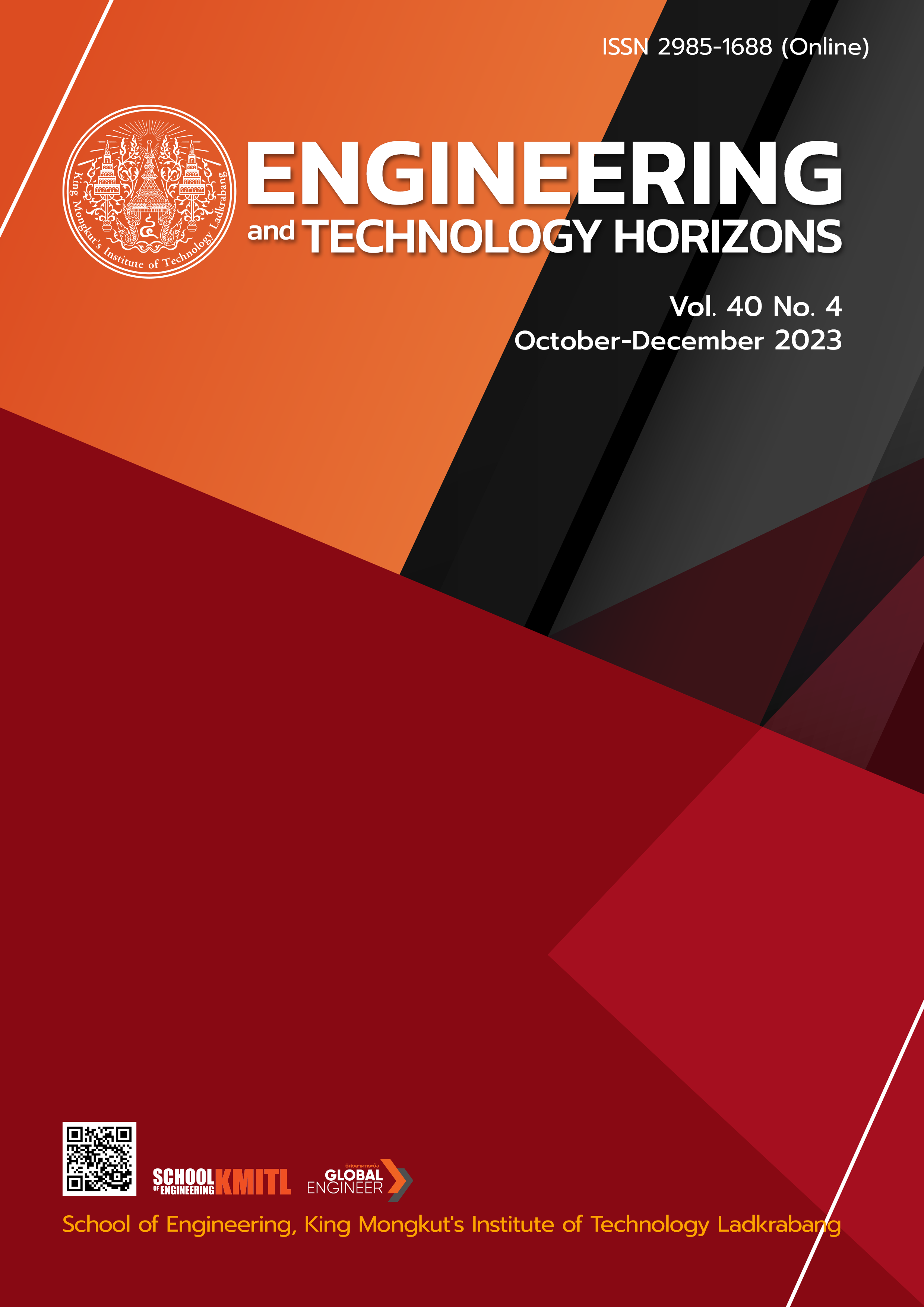Comparison of Aerodynamics and Flight performance of Fixed Wing Solar Powered Unmanned Aerial Vehicle when separate lift and thrust Vertical Take-Off and Landing system is installed
DOI:
https://doi.org/10.55003/ETH.400406Keywords:
Vertical take-off and landing aircraft, Fixed wing aircraft, Flying performance, 3D aerodynamic coefficient analysis, Solar powered aircraftAbstract
The objective of this research paper is to analyze the effects of installing a separate Lift and Thrust vertical takeoff system for fixed-wing solar powered UAVs in terms of flight performance changes. This research article uses a prototype aircraft in this study, which is a fixed-wing aircraft powered by an electrical system and equipped with a solar system. There are 2 types of designs, namely the type with installation and without installation of the Vertical Take-Off and Landing system which the vertical take-off and landing aircraft compared to the normal configuration will weigh 42.48% more and have a zero-lift drag coefficient of 67.1% more. The initial step involves creating an aircraft model in the XFLR5 software to assess the lift and drag coefficients and compare them with the wind tunnel test results. Subsequently, the software analysis findings are used to evaluate the flight performance of both aircraft configuration, as well as to identify the performance changes that occur when the VTOL system is installed. The outcomes align with expectations, installing a VTOL system leads to a significant reduce in flight performance, In particular, the Endurance and maximum range of vertical take-off aircraft are only 41.55% and 43.43% of normal aircraft and for solar-powered systems. The vertical takeoff has the Endurance and range is 31.46% and 32.06% of normal aircraft equipped with solar systems. which can be distinctly contrasted with the performance of aircraft in various aspects. However, these compromises are made in exchange for the capability to take off and land vertically.
References
J. N. Ostler, W. J. Bowman, D. O. Snyder and T. W. McLain, “Performance Flight Testing of Small, Electric Powered Unmanned Aerial Vehicles,” International Journal of Micro Air Vehicles, vol. 1, no. 3, pp. 155–171, 2009, doi: 10.1260/175682909789996177
D. F. Finger, “Comparative Performance and Benefit Assessment of VTOL and CTOL UAVs,” in Deutscher Luft- und Raumfahrtkongress 2016, Braunschweig, Germany, Sep. 13–16, 2016, pp. 1–10.
N. Glīzde, “Plotting the Flight Envelope of an Unmanned Aircraft System Air Vehicle,” Transport and Aerospace Engineering, vol. 4, no. 1, pp. 80–87, 2017, doi: 10.1515/tae-2017-0010.
P. Oettershagen, A. Melzer, T. Mantel, K. Rudin, T. Stastny, B. Wawrzacz, T. Hinzmann, K. Alexis and R. Siegwart, “Perpetual flight with a small solar-powered UAV: Flight results, performance analysis and model validation,” in 2016 IEEE Aerospace Conference, Big Sky, MT, USA, Mar. 5–12, 2016, pp. 1–8, doi: 10.1109/AERO.2016.7500855.
J. Kampoon, W. Jiajan and J. Klongtrujrok, “Aerodynamics, Stability and Control Analysis of Tactical Solar Power UAV,” IOP Conference Series: Materials Science and Engineering, vol. 886, 2020, Art. no. 012016, doi: 10.1088/1757-899x/886/1/012016.
Light Unmanned Aircraft Systems Airworthiness Requirements, Rep. no. AEP-83, North Atlantic Treaty Organization, Brussel, Belgium, Sep. 4, 2014.
M. V. Cook, “Flying and Handling Qualities,” in Flight dynamics principles: a linear systems approach to aircraft stability and control, Amsterdam, Netherland: Butterworth-Heinemann, 2016, ch.10, sec. 4, pp. 253–255.
V. S. Dwivedi, P. Kumar, A. K. Ghosh and G. M. Kamath, “Selection of Size of Battery for Solar Powered Aircraft,” IFAC-PapersOnLine, vol. 51, no. 29, pp. 424–430, 2018, doi: 10.1016/j.ifacol.2018.09.450.
L. R. Jenkinson, P. Simpkin and D. Rhodes, “Lift and Drag Estimates,” in Civil jet aircraft design. Oxford, UK: Butterworth Heinemann, 2003, ch.8, sec. 4, pp. 170–180.
DUALSKY. “XM5060EA V3 series brushless outrunners for air.” shop.dualsky.com. http://shop.dualsky.com/xm5060ea-v3-series-brushless-outrunners-for-air_p0316.html (accessed Jan. 1, 2022).
U.S. Military, “Military Specification Flying Qualities of Piloted Airplanes,” U.S. Military, Virginia, VA, USA, Rep.no. MIL-F-8785C, 1980.
A. Deperrois. “XFLR5 Analysis of foils and wings operating at low Reynolds numbers.” paul.chavent.free.fr. http://paul.chavent.free.fr/xflr5/Guidelines_v604_en.pdf(accessed Nov. 17, 2023).
Y. Chu, C. Ho, Y. Lee and B. Li, “Development of a Solar-Powered Unmanned Aerial Vehicle for Extended Flight Endurance,” Drones, vol. 5, no. 2, 2021, Art. no. 44, doi: 10.3390/drones5020044.
I. Ridwan and Alfindo, “The effect of use of solar panels on micro scale fixed-wing UAV type as a power recharging system,” AIP Conference Proceedings, vol. 2180, no. 1, 2019, doi: 10.1063/1.5135553.
Downloads
Published
How to Cite
Issue
Section
License
Copyright (c) 2023 Faculty of Engineering, King Mongkut’s Institute of Technology Ladkrabang

This work is licensed under a Creative Commons Attribution-NonCommercial-NoDerivatives 4.0 International License.
The published articles are copyrighted by the School of Engineering, King Mongkut's Institute of Technology Ladkrabang.
The statements contained in each article in this academic journal are the personal opinions of each author and are not related to King Mongkut's Institute of Technology Ladkrabang and other faculty members in the institute.
Responsibility for all elements of each article belongs to each author; If there are any mistakes, each author is solely responsible for his own articles.






